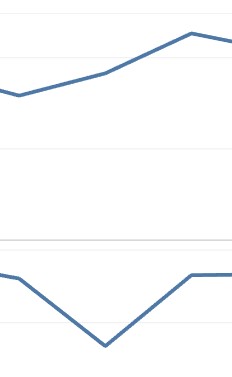By: Fahad Saifullah
COVID-19 was a stressful and scary time for everyone involved in it. Schools were shut down, businesses were closed, and everyone had to distance and stay shut away from loved ones. I myself, even on a deployment halfway across the world, had to deal with distancing issues and wearing masks on patrol. With all aspects of the United States slowing down, transportation inevitably slowed down as well.
There were three aspects of Transportation that I really looked at. They were Air, Highway, and Railroad. All were affected the same, but also differently.

I pulled my dataset off of the data.gov website (Monthly Transportation Statistics – Catalog (data.gov)). This dataset is a compilation of statistics on national transportation that was published by the Bureau of Transportation Statistics and is maintained by the Office of Transportation Analysis.
Air
Air transportation was the most affected by the pandemic. Airports and planes had incredibly strict standards that were heavily enforced. Along with that, many countries had travel bans enforced, flights were cancelled, and many airport pilots, crews, and concourse workers were laid off. The working conditions for airline employees were so bad, that as of today, the 10th of May 2023, both Southwest and American Airlines pilots have voted in favor of a strike both due to pay issues, and not receiving proper compensation for the the layoffs, less pay, and burnout they had to deal with during the pandemic(Why you don’t have to worry about a US airline strike disrupting your summer travel plans | CNN Business).
I chose to use two different graphs, one with the X axis just being years, and one eith the X axis being both months and years. The reason for this is that even though the X axis bring years is much clearer, months and years shows more data.
Between February and April of 2020, the total number of flights dropped from 67,830,000 to 3,010,000. That is a 95.6% decrease in total flights over the span of two months. This is the largest decrease I noticed all three areas of transportation.
Another interesting thing I noticed in all three trends was that fatalities did not really change much. They decreased during the initial drawdown, but shot up heavily in the resurgence that followed. From February to April of 2020, fatalities dropped from 25 to 14. However, from April to July of 2020, fatalities shot up to 56 in that month even though the number of flights was only 24,060,000. That is a 400% increase in fatalities, even though, the number of flights is only 35.4% of what they were in February of 2020. As a side note, the number of fatalities in February of 2020 was 25, under half of what they were in July. Not the best few months for airlines.

Highways
Highways were similar to airways, but not as bad. The numbers were greater, but, in my opinion, that is because, while some people are required to travel for work, mostly everyone in the United States drives for work. Also, most people drive their own personal vehicles, so mask mandates were not as strictly enforced for personal vehicles.
For highways, I noticed that the miles travelled did not decrease heavily and bounced back relatively quickly. In January of 2020, the total miles travelled was 260,847,000,000. In April of 2020, the number was 167,617,000,000. That is about a 35.8% decrease in total miles travelled. And by July of 2020, the numbers shot back up to 265,550,000,000, which is more than before the pandemic started.
In the same fashion as the Air industry, fatalities did not change much. They actually shot up even as the miles travelled went down.

Fatalities show up from 7,900 in January to 9,120 during April which was the month with the LEAST number of miles travelled. In July, they were up at 11,305. Sophia, who is in my Digital Studies class, made a really good thesis that stated that most of the people who were driving around during the pandemic were also the type of people to ignore mask mandates, ignore rules, and drive more recklessly. It is also my thesis that since people assumed less peope would be driving in the streets, that would make them more likely to not follow rules i.e. blow through red lights and stop signs.

Railroad
This was an interesting field of study for myself, personally. Growing up on the East Coast, trains were not really a thing. All shipping was done in ports, and shipped on trucks from there. The first time I have seen trains used to actually ship anything is in Colorado.
The trends that I noticed here are about the same for the other two. The interesting thing about railroads, is the Railroads did not bounce back as quickly as either Air or Highway. In January of 2020, the total number of train miles travelled was 3,505,313 and the next time miles travelled gets that close is August of 2021 with 3,127,428 miles. I do not have a thesis of why this is, but the information is interesting.

Conclusion
The trends I have noticed support my opinion on transportation during COVID. All transportation went down during 2020 when COVID hit and rose steadily up so the numbers are pretty similar to pre COVID numbers now. The hardest hit was Airline transportation, and the least hard hit was highway miles travelled.
A surprising trend I found was that COVID and less miles travelled generally had no effect on safety and fatalities. On the contrary, in 2021 for Highway, even when miles travelled decreased, fatalities shot up. My hypothesis is that people not driving decreased their safety on the road, and when they got back on the road, they still had the same confidence with decreased performance.
A concept that got hammered home for me specifically was the concept of less is more. We went over this concept in class during our Data Analysis block in our Digital Studies class. For me, the graphs where the X-axis is only years are a million times clearer than the graphs that include months and years. I included both of these graphs to emphasize that point.
May 10, 2023